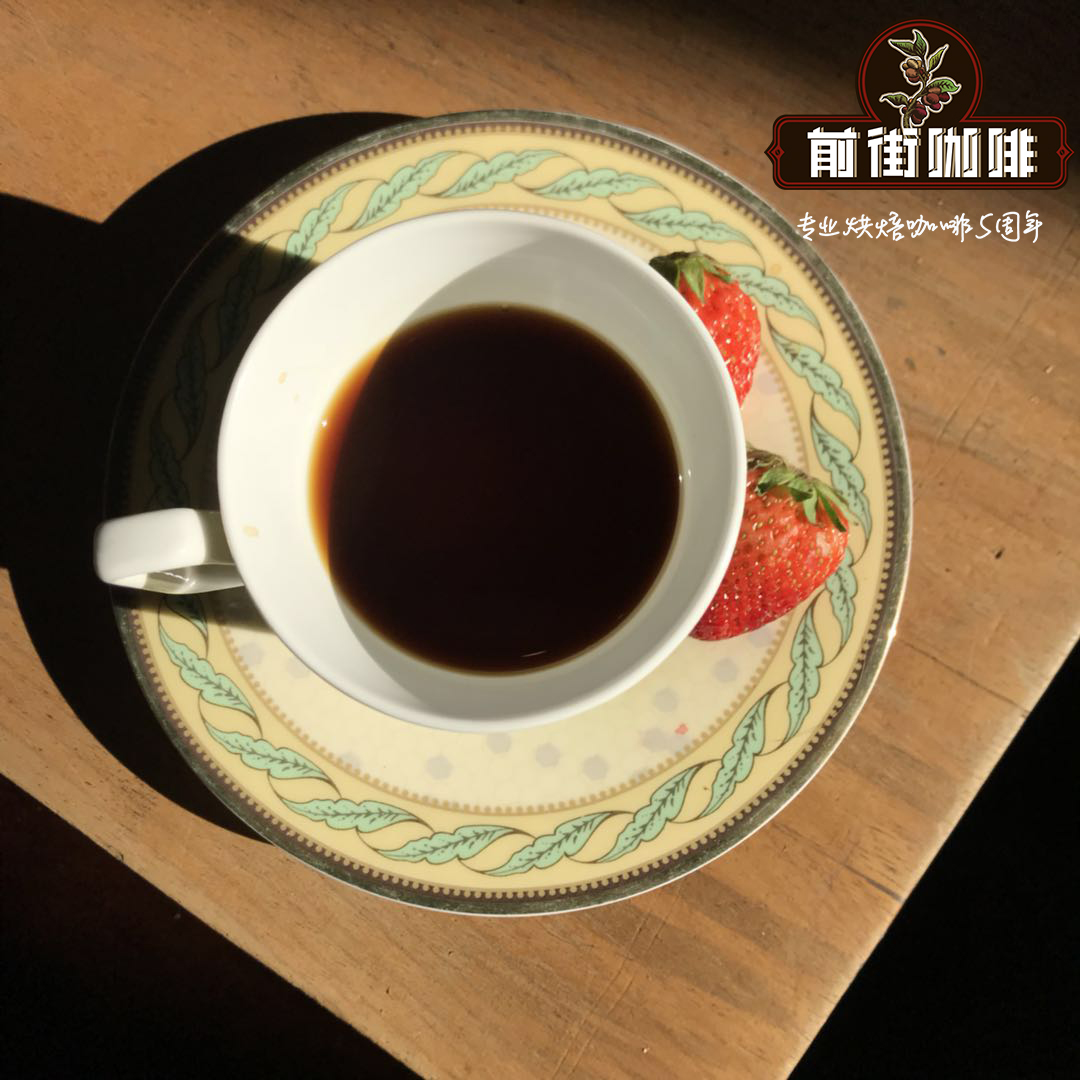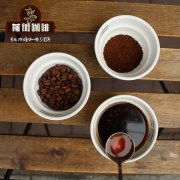Best African Coffee Bean Name Archives Where do the best African coffee beans come from?

Professional coffee knowledge exchange more coffee bean information please follow the coffee workshop (Wechat official account cafe_style)
The best African coffee beans:
The bean name is Kafa Forest, Ethiopia.
Price HKD70/200g
Producing area / Manor Caffa Forest
Production geographical environment 1700-1900 meters
Treatment mode of solarization
Special floral, cocoa and fruit aromas
Introduced from the most primitive Kafa wild jungle in Ethiopia
The coffee trees planted in the jungle are all part of the wild forest ecology.
At the same time, it also grows naturally under the protection of rainforest trees.
And litter is the best natural organic fertilizer.
Many people think that Ethiopia is the birthplace of coffee
Because the first coffee tree was found in the ancient "Abyssinia" Abyssinia
Present-day Ethiopia. The area where these trees bloom is called "Kaffa".
Trees are called "Kafa", which is probably the original pronunciation of coffee. The Kafa forest is the most primitive forest in Ethiopia, and the coffee beans planted are also part of the wild forest ecology; all because the wild ancient tree species are tall and difficult to manage, most farmers adopt a laissez-faire approach. Draw the essence of day and night from altitude, climate, and the most primitive mountain forests. Isabia beans are full of chocolate and wine acidity, the taste is mild, the acidity of coffee is soft, moderate and comfortable on the tip of the tongue.
Burundian AA
Price HKD60/200g
Origin / Manor Santa Ana Burundi Kayanza
The geographical environment of production is 1700 MULT2000 meters
Treatment mode washing
Taste: special tea, orange peel, cream chocolate, cardamom, raisins, Pu'er tea
Located in the eastern part of Africa, Burundi is a small landlocked country that does not rely on the sea, with a land area of only 28000 square kilometers, but 90% of the people with agriculture as the main income, of which coffee accounts for 80% of agriculture. The coffee industry here has literally saved the lives and lives of most people. It is conceivable that local residents attach importance to the cultivation of coffee.
Although Burundi is a member of the East African Community (East African Community,EAC), it is also one of the poorest countries in the world. Due to the long-term colonization of Burundi by Belgium, the official language is still French, which is similar to that of Rwanda, a small neighboring country, but in order to integrate with other English-speaking powers in East Africa (Kenya, Tanzania and Uganda), Burundi is also following in the footsteps of Rwanda in promoting English. Burundi is surrounded by Rwanda, Tanzania and Congo to the north, east and west, respectively, and more than half of its border with the Democratic Republic of the Congo lies on the famous Lake Tanganyika. Located in the steep rift valley of East Africa, Burundi has complex terrain, and the magnificent ridge on the east bank of Lake Tanganyika is also a watershed between the Nile River system and the Congo River system of two major rivers in Africa, inherently known as "Heart of Africa" (The heart of Africa).
Burundian coffee beans are mainly bourbon varieties, most of which grow at a high altitude of 1700-2000m. Local farmers crisscross with bananas and other beans. Coffee growing areas are mostly concentrated in Kayanza and Ngozi producing areas, mostly planted by small farmers, and then sent to large washing plants.
Product name Rwanda G2
Price HKD70/200g
Place of origin / manor
The geographical environment of production is more than 1900 meters.
Water washing fermentation with treatment method
Taste special bright fruit acid, with caramel and cream flavor, smooth taste
Introduce Rwandan coffee, which is the most popular African coffee after Kenya and Ethiopia. But unlike the two famous producing countries, it does not have a long history of planting, let alone native varieties everywhere in the wild. This small African country is a fire Phoenix that has been reborn after robbery.
Rwanda (Rwanda), known as the Land of a Thousand Hills, sits above the equator and is surrounded by East African States such as Congo, Uganda, Tanzania and Burundi. Geographically, it has suitable conditions for growing coffee, but since it was introduced by German missionaries in 1904, Rwandan coffee has been poorly handled commercial grade, most of which have been exported to the sovereign country of Belgium. The promotion of boutique coffee production began only after the ravages of war and after the economy got back on track.
With the support of the government, farmers have changed from rough home treatment to transporting freshly harvested fruit to a nearby water washing station (Coffee Washing Station) for full washing treatment. In a short period of 12 years, the number of washing stations across the country has increased from two to 220. It is now all private, that is, owned by exporters or farmers' cooperatives. Due to the small average area of farmland (less than 200 coffee trees per farm), about 50 to 100 farms are served at each station. NAEB employs 200 botanists and cup surveyors to regularly check quality at washing stations and educate farmers about soil management, organic planting, pruning, disinfestation and picking.
Strictly control the speed of air drying
Bourbon accounts for more than 90% of Rwanda's production. A small number of farmers grow bourbon variants BM-139 and Jackson. There are more mountains in the south and west, and water washing stations are also more famous. For example, Gitesi, Huye Mountain, Mibirizi, etc. Compared with drying on concrete in Central America, Rwanda will cover parchment coffee on an African bed with canvas to control the rate of air drying and slowly reduce the water content of the beans to 11% of the target in 10 to 15 days. Compared with sunlight exposure, this method helps to retain organic matter.
Rwanda is the first African country to host COE events. This is the fifth year. In taste, Rwanda coffee has obvious floral and fruity aromas, and tastes as smooth as tea. The balance is the highest in the United States of Africa.
Product name Sidamo
Price HKD70/200g
Origin / Manor Ethiopia Sidamo G2
Production geographical environment sea fish 1900 meters
Water washing fermentation with treatment method
Taste special sweet lemon, citrus fruit sweet, balanced Earl tea
This paper introduces that there are eight main producing areas of Ethiopian coffee: Ekempti, Limu, Illubabor, Djimma, Harrar, Teppi/Bebeka, Sidamo and Yirgacheffe. Ethiopian coffee is highly rated in Taiwan, especially the Ethiopian Harrar.
The three well-known producing areas, Sidamo and Yirgacheffe, are particularly interested and loved. Sidama province is located in the south of Ethiopia, with Arsi province in the north, Bale province in the east and Gamu Gofa province in the west. The jurisdiction of Sidama province includes two well-known producing areas, Yirgacheffe and Kochere. The industry is dominated by agriculture, and the coffee growing area is located around the East African Great Rift Valley (Great Rift Valley). The Sidamo producing area (Sidamo) is located in southern Ethiopia. The industry here is dominated by agriculture, and the coffee-growing area is located around the East African Great Rift Valley (Great Rift Valley). The largest town in Sidamo province is Hawassa, which is an important local coffee export distribution center. The coffee flavor of Sidamo is very diverse, because of the different soil composition, regional microclimate and countless native coffee varieties, the coffee produced in each urban area has obvious differences and characteristics. Shakisso is located in the southern part of Guji and Oromia, adjacent to Sidamo and Gedeo. There are many pits in this area, which were used to mine gold in the early days, so there are many potholes in this coffee growing area. This makes people dangerous when walking between coffee growing areas. Shakiso is a unique producing area of Guji / Cedamori, and even in Cedar Morri is a remote area far from most coffee producing areas, and another famous local product is gold ore. Miners, land, ethnicity and other factors also destabilized the region in 2006. As a result, the biggest problem facing the region now is that ─ needs manpower to maintain the growing area and harvest coffee. Local small farmers began growing organic coffee in 2001 and work closely with medium-sized coffee producers because they are familiar with how to grow forest coffee in the highlands.
Trabocca, the largest coffee and bean seller in the Netherlands, entered the area five years ago to co-produce with local coffee farms. They donate coffee cup testing laboratories and try their best to improve the quality and output of coffee beans every year. Trabocca owns 640 hectares of coffee nursery. Today, there are 12 long-term employees who have more than 10 years of coffee planting, production, processing and marketing experience. In addition to these 12, we also employ 3 qualified consultants and several short-term employees. During the harvest season, more than 300 people came to help with the harvest, and 150 of them worked independently.
Name: AAA, Tanzania
Price HKD80/200g
Place of origin / manor Mwenga Estate
The geographical environment of production is 1600-1900 meters.
Treatment mode washing
Taste special bright aroma, not wild not choking fruit acid
East Africa is the producer of many fine coffee, including Kenya, Ethiopia, Rwanda and so on. Tanzania is another country that produces good coffee in East Africa. In 2008, Direct Coffee introduced the sweet and fragrant Tanzania Kighoma beans that impressed many people.
Coffee is the largest crop in Tanzania. About 450000 people are engaged in coffee-related agriculture. Due to its proximity to Kenya, the flavor of Tanzanian coffee tends to be similar to that of Kenyan coffee, but because of inconvenient transportation and backward basic coffee equipment, coffee is often contaminated during transportation or damaged due to insufficient equipment in the treatment process, resulting in a bad impression of Tanzanian coffee. It is thought that the overall sour quality of Tanzanian coffee is less fresh and less strong, but in the past two years, the southern Ruvuma producing area near the Indian Ocean has convenient transportation conditions, coupled with the contract with European and American raw bean merchants to place the order before releasing the coffee to ensure the quality of the coffee. The main tree species of coffee in Tanzania is Arabica. The coffee beans are treated by natural washing. The coffee grade is the same as that in Kenya, and the AAA grade is the best. The sales of high-quality coffee are auctioned and sold directly. In the new season of 2010, the coffee produced by Ruvuma was introduced. The raw coffee beans are emerald green, and the coffee particles with uniform uniformity have better semicircle shape than Kenya AA grade.
Name Yemeni mokamatari Yemen Mocca Mattari
Price HKD200/200g
Origin / Manor Matari, Yemen
The geographical environment of production is above 1400 meters above sea level
Treatment mode of solarization
The palate is full of acidity, strong stimulation, more prominent than the fruit, with perfect depth and concentration. When the coffee cools, it has a hint of fruit and chocolate.
Introduction until the sixth century AD, Yemen was called Arab, so coffee trees shipped from Yemen to other places were also called Arab coffee trees. The origin of these trees is Ethiopia (Ethiopia), and the Dutch spread these coffee trees all over the world. Dutch businessmen heading eastward around the Cape of good Hope began to make a long journey.
Before wading to India, you have to pass through the east coast of Africa to the port of Mocha in Yemen. In 1696 the Dutch introduced the coffee tree to Ceylon (now Sri Lanka) and then to Batavia in Java. Mocha beans are smaller and rounder than most, which makes mocha beans look like peas-in fact, bean-shaped berry coffee beans (Peaberry bean) are sometimes called mocha beans. Mocha beans are similar to Ethiopian Harrar beans in shape, with small particles, high acidity and a hint of chocolate, so the attempt to add chocolate to coffee is a natural development. In Yemen, coffee growers plant poplars to provide shade for coffee trees to grow. As in the past, these trees are planted on steep terraces to maximize the use of less rainfall and limited land resources. In addition to Tibica and bourbon coffee trees, more than a dozen different coffee species native to Ethiopia are grown in Yemen. However, even the best coffee, such as premium mocha, is air-dried and the peel is connected to the beans. Until now, traditional stone mills are often used to remove dry and hard shells, which makes the shape of coffee beans very irregular and often damages them. Despite the high quality and smooth aroma of Yemeni coffee, there is something unsatisfactory, that is, the quality can not be continuously guaranteed, and the classification of its coffee beans is uncertain. Traditionally, the best coffee beans in Yemen come from Mattari, followed by Sharki, followed by Sanani. These producing areas are treated by the sun, so the coffee beans have a wild flavor. Generally speaking, Yemeni coffee has a unique character, wild, complex and exciting, especially the charming sour wine and deep dark chocolate flavor. These beans are low in caffeine and are exported from December to April of the following year. The problem in the past has been that coffee from the north was mixed with shoddy stuff before it was shipped from the southern port of Aden. Only coffee shipped from the port of Hodeida can be determined to come from the north.
Important Notice :
前街咖啡 FrontStreet Coffee has moved to new addredd:
FrontStreet Coffee Address: 315,Donghua East Road,GuangZhou
Tel:020 38364473
- Prev

Which country has the best coffee beans? The Story of African Coffee beans the flavor characteristics of African coffee
Professional coffee knowledge exchange more coffee bean information please follow the coffee workshop (Wechat official account cafe_style) boutique (single product) coffee bean characteristics: 1. Boutique coffee beans must be high-quality beans with flawless beans. It should have an outstanding flavor, not without a bad taste, but with a particularly good taste. two。 High-quality coffee beans must be excellent varieties, the coffee beans produced
- Next

What kind of coffee beans make good coffee? Which country has the best coffee beans?
Professional coffee knowledge exchange more coffee bean information please follow the coffee workshop (Wechat official account cafe_style) everyone likes different tastes! So the answer to this question is that you know it yourself. Our taste buds are very influenced by the environment, personal emotions, preferences, physical conditions and other factors, so we have to try in many ways in order to slowly understand our preferences. Coffee removal
Related
- Does Rose Summer choose Blue, Green or Red? Detailed explanation of Rose Summer Coffee plots and Classification in Panamanian Jade Manor
- What is the difference between the origin, producing area, processing plant, cooperative and manor of coffee beans?
- How fine does the espresso powder fit? how to grind the espresso?
- Sca coffee roasting degree color card coffee roasting degree 8 roasting color values what do you mean?
- The practice of lattes: how to make lattes at home
- Introduction to Indonesian Fine Coffee beans-- Java Coffee producing area of Indonesian Arabica Coffee
- How much will the flavor of light and medium roasted rose summer be expressed? What baking level is rose summer suitable for?
- Introduction to the characteristics of washing, sun-drying or wet-planing coffee commonly used in Mantenin, Indonesia
- Price characteristics of Arabica Coffee Bean Starbucks introduction to Manning Coffee Bean Taste producing area Variety Manor
- What is the authentic Yega flavor? What are the flavor characteristics of the really excellent Yejasuffi coffee beans?

